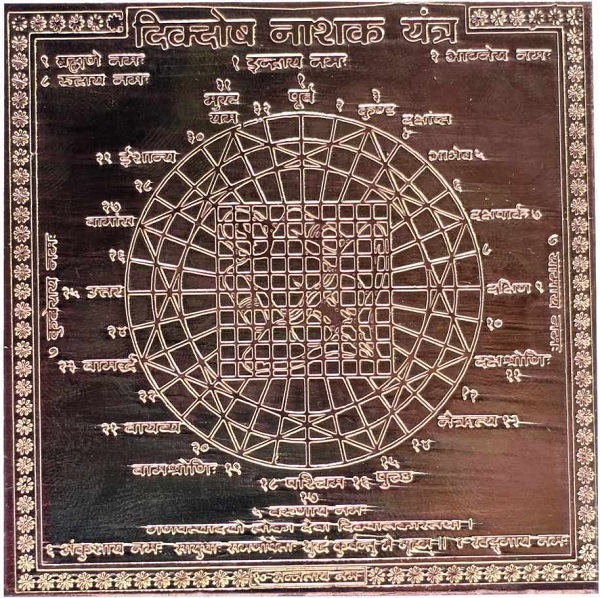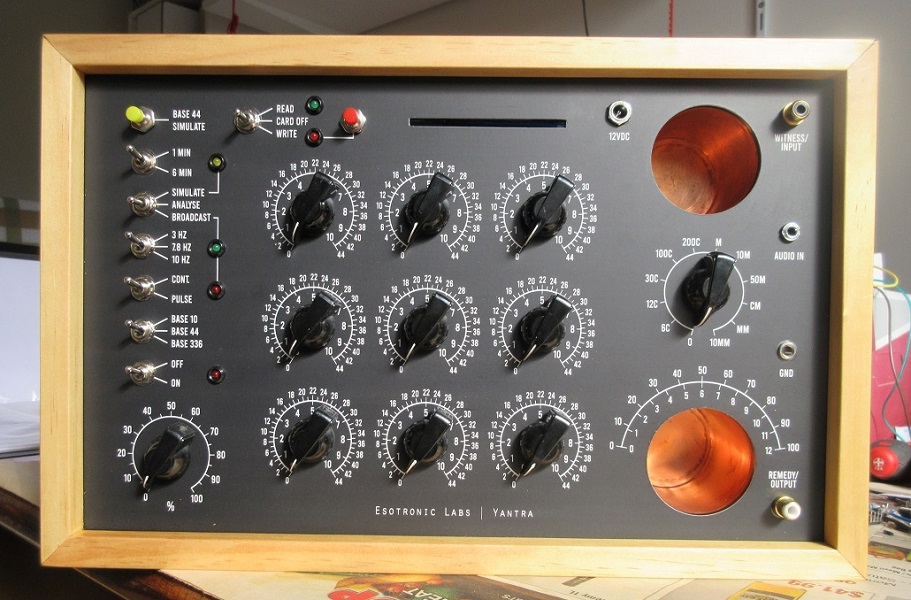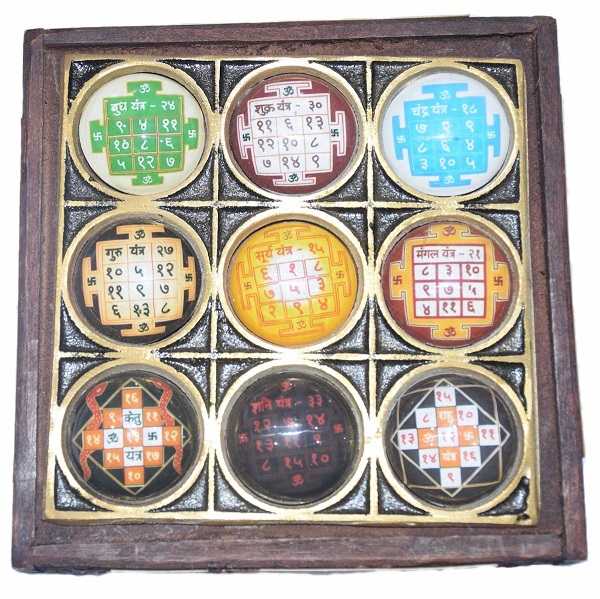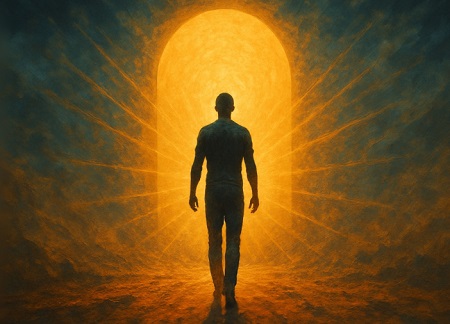I am convinced that everything is connected, unified, when you are on the spiritual path. Not on this objectified, materially focused plane, but on almost every other plane you can imagine, esoteric and spiritual. If you glance sideways, then everything is literally connected through telling diagrams and patterns. All things point the way forward and upward. In sacred geometry, numerology, mandalas, the wheels of Ezekiel, the five elements that comprise this world, Platonic solids, etc., all things point beyond themselves and towards the Absolute. There is, within themselves, the seed of Totality.
Since radionics resonates with geometric shape (re. Malcolm Rae cards), so the instrument also could – or perhaps should – represent sacred geometry in some form or other. The symmetry that permeates creation is fundamental. The growth of leaves of plants doesn’t flout nature’s laws. In the same way an instrument intended to be in tune with Nature won’t be of arbitrary design. Even the use of the Golden Ratio serves to connect radionics with the Absolute, or Totality, mirroring the divine plan. I have found this in my own instruments, and coincidentally have also discovered that the Delawarr radionic camera also used the 1.618:1 Golden Ratio in its dimensions.
For some time now I’ve been interested in viewing the radionics instrument as a yantra. What is a yantra?, you might ask. A yantra is a sacred Hindu diagram, a sacred enclosure, a dwelling or receptacle, which embodies or represents a deity. It is projected into the cosmic and psychic dimensions, that is, the microcosmic and macrocosmic, and takes on meaning only with awareness of the metaphysical principles. “Yantra” literally means “device” or “instrument”, and is derived from the root “yam” meaning to hold, sustain, or support the energy inherent in a particular object, element or concept.
(Here follows an extremely brief description of yantra sadhana, which may not be everyone’s glass of chai, so to speak.)
Sadhguru says: “A yantra literally means machine. A machine is a combination of very purposeful forms. If you make some forms very purposefully and assemble them together – ten gear wheels for instance – it becomes a machine. A yantra is a form, simple or complex, towards a certain purpose. A combination of yantras becomes a larger yantra – a larger machine…
“The Pancha Bhuta temples, the five major temples that were built in southern India, were not for any god but for the five elements of nature: earth, fire, air, water, and space…
“Creating such yantras was the basic aspect of this culture. In every town, first a temple – a phenomenal yantra – was built. Those who built these temples might have lived in huts themselves, but it did not matter to them because they knew that as long as they made this yantra work, their life would be good.”

Yantras are most understood by those who actually use them; the philosophy cannot be learned from a book. With the aid of a guru, or a preceptor, they are a method and means to hold and maintain the conscious presence of the power of the deity who is called into the sacred geometry. The yantra, acting as a carrier of its representative energy, is exceptionally empowering.
I believe that an effective radionics instrument does contain elements of sacred geometry. However I’d be the first to admit that there isn’t a direct correspondence between everything that a radionics instrument and a yantra represents, but I’m willing to explore the parallels nonetheless. If you squint just a little, and with a steady gaze with your peripheral vision, you may see the instrument as a tuneable yantra. I hope that you may gain a little inspiration from this correlation and exploration, imperfect and incomplete though it may be.
Mantra and Yantra
The yantra, as a device for ritual worship (puja), is empowered by the word – a “mantra”. This sound, this word-element from which all the universe takes its birth and retains its life, exists as a thought-force, underlying which there is sound existing as a conceptual idea in its germinal state. There is an example of this in radionics, with the teletherapy work of Dr Benoytosh Bhattacharya and his use of written mantras. Yantras almost invariably have letters, seed (bija) syllables or mantras inscribed in them. A bija is a sound vibration, a mantra, condensed into a single syllable, often forming the mantra for each petal, each deity and each level, including the central primal point (bindu) of the yantra. In fact, a bija mantra may symbolise the bindu, and vice versa.
The structure of certain mantras is based on the esoteric symbolism of numbers (see below). An example is the mantra devoted to Shiva composed of five letters: “Na|mah Shi|va|ya”. Within him, the five aspects of the universe are contained: ether, air, fire, water, earth. Similarly, the various radionic “Rates” for all the substances are derived from numbers – actually from these five elements – whether literal numbers on the dials, or the angles of radial lines in a geometric diagram as on the Malcolm Rae cards.

Yantra, the sacred geometrical form, and mantra, the divinized sound, together constitute tantra. (“Tantra” is a word meaning “loom” or to “weave”. By extension it may mean “doctrine” or “work”, and is a ritual oriented system.) So it is that yantra and mantra together form a coherent complex, comprising form and sound. Although functioning on different levels, both yantra and mantra are mutually influential and complementary. The yantra may be reduced to a particular vibration (mantra), and mantra may be the particles of matter which form a particular geometrical shape (yantra). Both are intended to be a substitute, one for the other, in the principle of science – either energy into matter, or matter into energy.
Everything in life possesses the force or energy to transform, to become, to be, to expand its inherent nature and to grow, as it were, from within. This is common knowledge to the radionics practitioner, and also to the tantric. This cosmic principle of creative force is seen to be creating, maintaining and absorbing everything in life and on every plane of existence. It is this force with which we attempt to attune when we practice radionics.
The Cosmic Principles
Here I shall briefly and comprehensively (hopefully) outline the tattvas, the cosmic principles, from which we may understand our spiritual journey, and which radionics may provide a vehicle. Imagine the form of a pyramid divided horizontally into three parts.
At the top are the Pure Tattvas, the macrocosmic consciousness. Shiva tattva, pure consciousness, shared with Shakti tattva, the energy of bliss, are at the pinnacle. They are not two, but one. The Shiva/Shakti principle indicates the motionless, pure consciousness and the dynamic creative energy, both existing together and inseparably. These, together, comprise the energy of will, energy of knowledge, and energy of action.
The middle division of the pyramid are the Psychical Tattvas, the microcosmic consciousness. These are comprised of Maya Shakti (power of illusion) that creates the initial division from the original wholeness. These divisions limit the power of Shiva, limit the power of knowledge, limit the power of desire, limit the power of time, and limit the power of causality.
At the lowest level of the pyramid are the Physical Tattvas, the material universe. This is the realm of complete duality created by the three gunas (quality or attribute) – sattva, rajas and tamas. Sattva forms the intelligence, the ego-sense and the mind. Rajas is comprised of the five sense organs and the five action agents of the body. Tamas is comprised of the five subtle elements and the five gross elements of material existence.
Time, Evolution and Involution
Since in the Hindu framework time is cyclic, evolution first descends downwards, from Shiva/Shakti to the material world made up of the elements, and then continues upwards, through involution, returning towards Shiva/Shakti to merge into them once more. When practicing radionics we transcend the lower, physical aspects of the gunas, rise through the middle stage of the psychical aspects, and finally attain the Shiva/Shakti aspect, where pure consciousness and pure action have their place. This is somewhat similar to the realm of David Tansley’s Dimension II, and other concepts of reality.

A yantra therefore charts the road of eternal return and the way to inner wholeness. Once the adept has internalised all the symbols of the cosmos, his body “becomes the yantra”, he is no longer alienated from the truth that the symbol represents, and he is transformed into that truth. In the Tantras, the human body performs a unique role, and it is considered the most perfect and powerful yantra. All of existence is gathered up into one’s own being. It is thus treated as a tool (yantra) for inner awareness. The Shakta Darshan, a tantric text, says: “The disc of the body-cosmos is the best of all yantras.”
I’m reminded that Ram Das was one time talking to a crowd of hippie pseudo-spirituals, and there was one woman at the front, elderly and dressed in a very practical fashion, who was nodding to everything he said. Afterwards he spoke with her and asked, “How do you know what I’m talking about?” She leaned in towards him and said knowingly, “I crochet!”
I’m convinced that the practice of radionics, in a similarly devoted fashion, is also a path to inner awakening. I remember reading that Yvon Combe also had a similar viewpoint. The instrument may serve a purpose, but it is the human body itself which is the ideal instrument, once perfected.
Initiation
It is said that only God can worship God, so the aspirant must undergo various forms of purification, to free him from ego. Meanwhile the yantra must undergo a complete ritual transformation by the rights of initiation so as to be accessible for what it is intended.
One of the most important rituals is the infusing of vital force (Prana) into the yantra. The goal is to invite the spiritual universe underlying the iconography and myth into the yantra, so that it becomes a receptacle of cosmic power and consciousness. The phenomenal, material form is transformed into sacred archetypal space. Application of mystical geometry utilizes structured patterns which contain the power of both mantra and yogic practices. I would suggest that something of this insight is also of benefit to the use of the radionics instrument.

The adept thus ritually transfers his own power into the yantra, transforming his relationship to it. The ritual consecration of the space defined by the yantra elevates him to where he realises its inherent energy, and so it then becomes a powerful means of contact between himself and the cosmos. Through the rituals he becomes the very embodiment of consciousness, his body the epitome of divine energy. Thus “cosmicized”, he is an appropriate vehicle for the embodiment of power in and through the yantra.
In Hinduism, man is regarded not as an accidental, separate produce of evolution, but an extension of divine consciousness. His life, like the cosmos, is bound by purpose. The external objectified world, and the internal world of man, are made of the same “stuff” and related by an indivisible web of mutual affinities. Thus, according to the Tantras the relationship of man and cosmos is reversed, and man himself has become the cosmos.
Another observation here is that the chakras (with which we in radionics are quite familiar) are meditated upon as internal yantras of the subtle body. This insight, that chakras may be visualised as yantras, has certainly expanded my own perspective.
Finally the ritual reverses the status of the yantra, so that what was earlier seen as an archetype of the sacred, reverts to a “mere” diagram. The yantra may be ritually destroyed, symbolising that the yantra and the worshiper are one with Brahman, the Absolute, about which little may be said. The Bhagavad Gita (4:24) says: “For those who are completely absorbed in God-consciousness, the oblation is Brahman, the ladle with which it is offered is Brahman, the act of offering is Brahman, and the sacrificial fire is also Brahman.” Psyche, symbol and cosmos are gathered into a single entity – the symbol is assimilated into the body, and the body into the cosmos – forming a circuit of cosmic unity.
The Ultimate State of Union
Ritual, although important, is not the final stage in yantra meditation. The symbolic image is seen as gradually simplified, and the worship progressively contemplative. At the highest stage the yantra is condensed into an imaginary “bindu” (primal point, the central point of the yantra) and, ultimately, the primal point disappears so that the adept and the object of his attention become one. The man, symbol and cosmos are united by the dynamics of the yantra and the subtle consciousness of the adept.
While these practices aren’t directly related to the use of radionics, I believe that certain attitudes and practices inspired by the yantra may be adopted to benefit your practice of radionics (not literally but in the spirit of this article). Patanjali, who formulated the system of yoga, recognised the importance of using an external object to focus one’s attention. He wrote that, “Concentration may be attained by fixing the mind upon any divine form or symbol that appeals to one as good,” from the “atomic to the infinitely great”. I can’t see why the radionics instrument may not be used as a focus of attention, at least in a limited form, all other things being kind of equal.

Since man and the universe – the microcosm and the macrocosm – are related, there are fundamental affinities between the cosmos, the subtle (or psychic) body and the yantra. The adept makes his journey of return, or ascent back to Shiva/Shakti, by energizing the psycho-cosmic (man-universe) affinities.
Yantras mark the progressive stages from material (or gross) to the subtle. Closed concentric circuits of various geometric shapes (mandalas or chakras) correspond with the planes of consciousness. Can we find a correspondence with radionics here?
It is said that a yantra represents a multitude of levels, or planes of reality, in just two dimensions. The bindu, a fusion of all directions and of all levels – the centre of consciousness – experienced at the centre of the eyebrows, is the goal. The yogi passes through the circuits, from his own subconscious “gates”, to be reunited with the permanent element of the universe. With the out-petalling of the soul-flower, the thousand-petalled lotus at the crown of the head, he attains the ultimate state of union.
Numerical Yantras
Physicist Dr Michio Kaku declared that mathematics is the language of the gods. “The mind of God we believe is cosmic music, the music of strings resonating through 11 dimensional hyperspace. That is the mind of God.” On the scale of the metaphysical, there is a direct relationship between mathematics, sound, and form. In tantra, the yantra is the geometrical form representing sound (mantra). Mathematics (numbers) is what connects word (mantra) and diagram (yantra).
Numerology is an ancient scientific art. Ever since Vedic times, many thousands of years ago, numerical yantras have been a part of Indian spiritual practice. One example is the 3 x 3 yantra, known as “Magic Squares” by mathematicians. This yantra is associated with Ganesh. The numbers are arranged in a way that by adding any column, whether horizontal, vertical or diagonal, the resultant number is always 15. The planets, or planetary deities, also have a similar yantra associated with them.

There is also the Chautisa Yantra, a 4 x 4 numerical yantra, in which every column, and group of squares, add up to 34, without using the same number twice. Chautisa means 34. Just as these collections of sacred numbers are used when performing a sacred rite, or to offer a form of protection, radionics utilises groups of numbers, known as Rates, to perform similar functions, such as aligning specific energies and thus bringing about healing or a desired outcome. Although not formulaic (with the possible exception of Ruth Drown’s rates) they nonetheless perform the various tasks we call upon them to do.
A rate is representative of a situation or condition. The condition may be said to be changing moment by moment, so in a way it doesn’t matter what the rate is. Each rate, if dowsed meditatively, will contain the necessary numerical information.
Form and Shapes
Because of the correlation between mantra (sound) and yantra (diagram), a brief mention of cymatics won’t go amiss. The term “Cymatics” was coined by Swiss physicist Hans Jenny, who was also a follower of Rudolf Steiner, from the ancient Greek word “Kyma” meaning “wave”. It is the study of visible sound vibration via sand, fluids, powders, etc., on a membrane such as a metal plate. He discovered certain similarities between yantras and the sound vibrations. It is claimed that he discovered that the Sri Yantra was formed in a sand medium when “Om” was chanted in a specific tone, however as far as I’m aware nobody has been able to reproduce it. Personally I doubt it.
Under optimal conditions, cosmic energy is embodied in both the yantra and the mantra. The yantra may be considered the physical body, or representation, of spiritual energy, whereas the vibration of the mantra is the energy itself, traced from unmanifested reality, which can transform consciousness.
Finally, a few points regarding the generalised form in which the yantra appears. The structural elements of yantras vary greatly, as do the interpretations of those elements. However we will briefly summarise these points, and hopefully get a feeling for what may be a basis to understand radionic rates from a sacred numerological perspective. I am particularly interested in coming to an understanding, or interpreting, radionic rates from this sacred or esoteric viewpoint.
Numerology
In the yantra, number provides harmony, stability, integration and unity. The numbers are not simply sums of integers, but have specific symbolic relationships with philosophical ideas. Thus the number becomes the form rather than the form defining the number.
The bindu, the 1 central point, which may be visible or invisible, is the principle from which all forms radiate. It is equated with the union of Shiva/Shakti (the two aspects of the one reality) and the void of space.
The triangle, upward pointing, is associated with fire and with Shiva. The downward pointing triangle is equated with the female sex organ, represents water and falling rain, and is associated with Shakti. Triangles are naturally symbolised by the number 3 and everything it represents, especially the 3 gunas – which equate to creation, preservation and dissolution. The triangle is the primal creation of the union of Shiva/Shakti, the bindu. The two triangles are frequently intertwined to form a hexagram (a 6 pointed star), the union of Shiva and Shakti, the two principles of reality.

The pentagram, the 5 pointed star, is less commonly used. The number 5 has special significance for the goddess Kali, and also represents the 5 aspects of Shiva.
The hexagram (see above) represents the number 6, and the interpenetration of Shiva and Shakti.
The octagon is not used commonly. It is formed by two intertwined squares, so it forms an 8 pointed star. The symbolism, like that of the 8 petalled lotus, represents the 8 cardinal and intermediate directions.
The Sri Yantra, the most common or popular of yantras, embodies the 9-fold division of cosmic principles through the circuit of 9 interlocking triangles. The 4 pointing upwards represent Shiva, and the 5 pointing downwards represent Shakti. Among other things, they symbolise the 9 apertures of the human body, the 9 names of the Devi (the Goddess), and the 9 divisions of time. The 16 petals of the Sri Yantra are associated with the 16 vowels of the Sanskrit alphabet, and the names of 16 deities.
The lotus is used extensively in yantras, which may be inscribed with one or several lotuses of 4, 8, 10, 12, 16, 100 or 1000 petals. It is a symbol of creation, purity, transcendence, and the sphere of the absolute. It is often surrounded by 1 circle or 3 concentric circles, and a square, or sometimes 3 nested squares. The 8 petalled lotus is most common, and the points of the petals are ideally oriented towards the cardinal and intermediate directions. A pattern of 9 lotuses, arranged in groups of 3, appear in several important mandalas, especially in Buddhism. In a mandala, a wheel (chakra) may replace the lotus. The deities are then assigned to the hub and spokes of the wheel, rather than to the petals.
The circle, or three concentric circles, surrounds the inner structure of the yantra. Some say that it represents the water element. When there are concentric circles, proceeding from the periphery to the centre they may symbolise water, fire and air.
The outer square is often composed of 3 nested squares. It encloses the yantra and represents the earth. Symbolically it is the number 4, and is connected with the 4 cardinal directions. The 3 squares represent the 3 primary constituents of matter (guna). A square within a square represents heaven, the spiritual realm. The square is flanked by 4 gates, also equated with the number 4.
Yantra Design and Creation
Traditional Indian spiritual artwork, which includes yantra, isn’t a means to individual self-expression, but is a focus of the spirit. It reflects the divine archetype, and is a bridge between the finite and infinity. The form isn’t valued for its own sake, but provides spiritual and metaphysical truth. What is sought in form is the indwelling “soul” imprisoned in the material. All such images are symbols of the Supreme Principle.
The integral relationship of form and content means that if the structure of the yantra is imperfect – that is, if the balance of the form is distorted or a single line or symbol is not present – then the content and symbolic significance will be destroyed. Moreover the worshiper of the deformed yantra will suffer a cognitive distortion of the archetypal image within his psyche. Thus the yantra is to be created with extreme care, following traditional prescriptions to the finest detail.
If a yantra fails to be “active”, the fault is with the person using the yantra, never with the yantra itself, for it is never tentative or arbitrary. It is based on the laws of space, vibration, number and dynamics. This ought to be the design principle followed by radionics, as far as I’m concerned.

In the creation of the yantra, the artist follows various practices, including disciplining his impulses, controlling his physical and mental processes, and suppressing the chaotic world of his subconscious through meditation and concentration. The yantra may be perfectly reproduced, flawlessly drawn and coloured, but the maker must transmit to the figure his inner tie to cosmic forces, imparting the reality which he has intuited, of which he himself is a part. This clear, creative process is also desirable for the construction of a radionics instrument, the intention and purpose of the creator being subtly embodied in the instrument and its function.
This creation obviously has no space for “art for art’s sake”. The viewer of the yantra, regardless of its environment, can know it and comprehend its inner meaning. The yantra manifests a universal intuition for the viewer, experienced through the stages from worship to reintegration with the Divine. The image of the yantra remains universal, maintaining a common tradition across India, in contrast with the iconographical images of the deities which are subject to historical or geographical changes over time.
Visually the yantra has more in common with Indian temple architecture than with icons of the deity. The inner space of the temple is arranged so that the devotee has to cross a series of sacred enclosures devoted to various deities in order to reach the sacred centre. Both temple and yantra create a “universal pattern” combining all aspects of existence.
The deity may be apprehended via the murti (iconic form), yantra (geometrical equation) and mantra (esoteric sound). The icon is the grossest manifestation of the deity; the yantra is the geometric counterpart of the icon; and the mantra condenses the potentiality of form into sound. Icon and yantra should not be seen as separate entities, being two ways of apprehending the Supreme Principle. In the sequence from the gross to the subtle, the yantra forms the link between form and formlessness, visible and invisible energy. This is similar to the practice of radionics – the instrument providing form to the invisible link, the broadcast, the informational communication between the practitioner and the recipient.
This has been a longish article, but an extremely brief overview of the yantra. I have attempted to equate its design and practices with radionics, briefly referenced along the way as if in passing – perhaps failing, perhaps stretching the fabric a bit, but hopefully providing some fascination for the reader. Overall, what I have held in my mind is the yantra as an instrument, together with the primacy of consciousness as the ground of all being. If nothing else, I believe that I have accomplished this.
As usual you are invited to participate in the conversation by commenting below. Thank you.




Hello, where is it possible to buy this beautiful radionics machine (Esotronic Labs Yantra)? Thank you
It’s a one-off instrument that I built for myself. Sorry it’s not available. I’m currently building a slightly different version which may be available in the future. I don’t mass-produce.
Thank you. Could you please let me know when this new version will be available? (I only need one machine :))
The first one is still under construction, so it might take awhile. I’ll let you know once I’m ready to build. Thanks.
Super ! Merci beaucoup ! Olivier
Hello. Very nice your new Radionics machine. Please can you share some diagram of how Radionics Rates can be recorded on a Magnetic Card. My idea is that about 15 rates in Total can be recorded sequentially on a Magnetic Card, to then be sent to the Witness with the set of Rates. I want for myself, I do not sell machines.
Thanks for the compliment. I can’t say that I have much information for you. Fifteen rates is actually quite a lot, I feel. My instrument simply has an audio amp mounted parallel to the card slot to write and read it (I got the idea from an old Copen Mk12 that I have which uses an audio preamp, but Copen used whatever boards he could get, and wired them up symbolically with no power to them). I do actually use cards with a strip of magnetic tape glued to them, but the instrument records just one rate.
I’m coming to the conclusion that the instrument “merely” reflects what we are thinking or what our intention is, in a symbolic 3D form, thereby being an interface between our mind and physical reality. Therefore there may be no limit to what can be “recorded” onto a magnetic card, our imagination and intention being the limiting factor. Perhaps I would have a row of LEDs which would light up sequentially with each rate that is “recorded”, so that the mind may make the correlation with the rates. That, I believe, should do it. Good luck with your project.
One of the more popular teachers in the community of Hieronymus instrument users is Peter V. Radatti. He tells people that rates are “pointers” to the information/concept/idea that they represents. He says that there is no limit to the number of rates that can be potentized/imprinted into a substrate.
I do a lot of potentizing/imprinting myself. I have found that if there is a limit to the number of rates that may be imprinted into something, that number is high enough that it doesn’t matter. I know people who have “recorded” hundreds of rates in a test tube of crushed stones. All of these rates can and have been analyzed and verified to be in the test tube. I have potentized as many as 40 or more into 3 inch mini CD disks. So I agree with Pete Radatti that rates are pointers to, or symbolic of, the information. I think that we only have our hands on a small portion of whatever “radionics” is.
Hi Dan, thanks for your insights. Great to hear from you again. Rates are indeed “pointers” or symbols of aspects of the world. And I agree that we still, as yet, have yet to understand everything that radionics is. Even after 100 years.